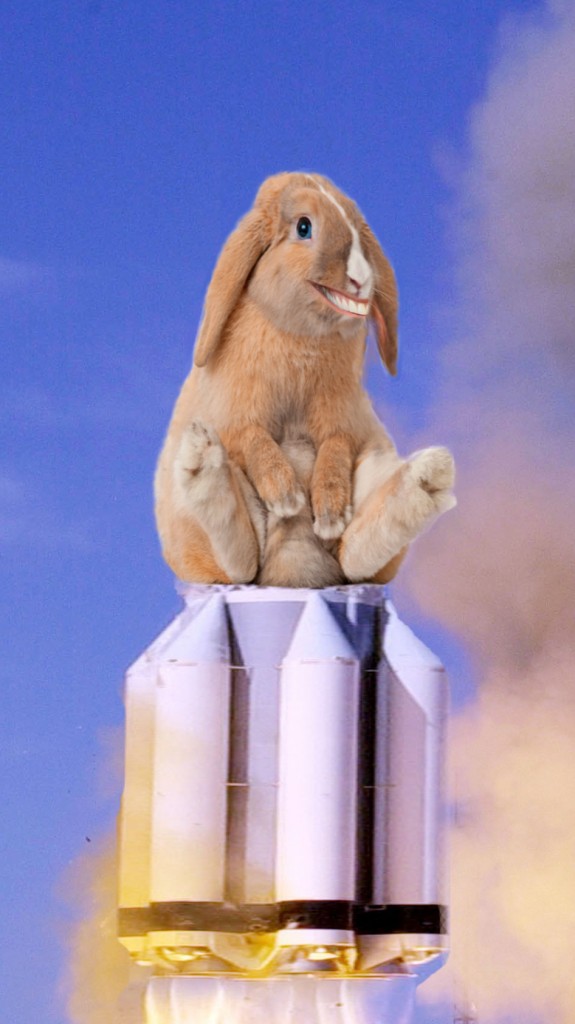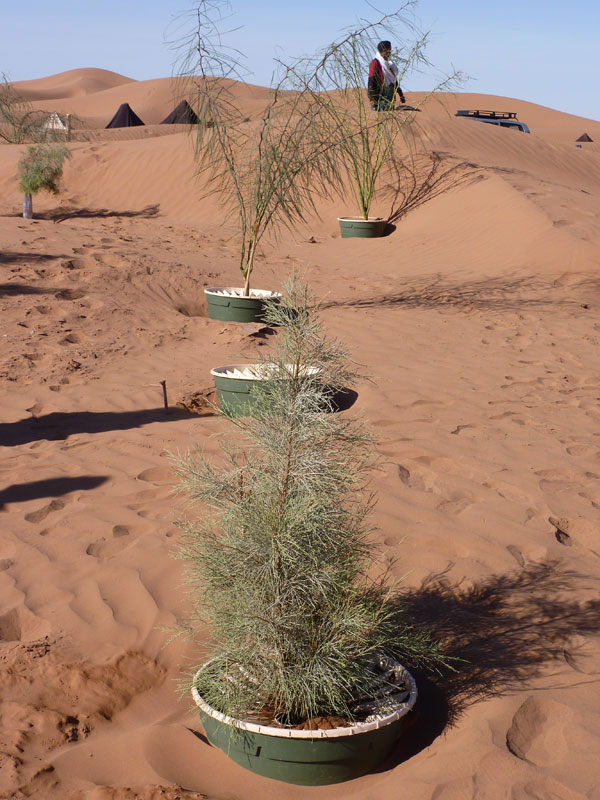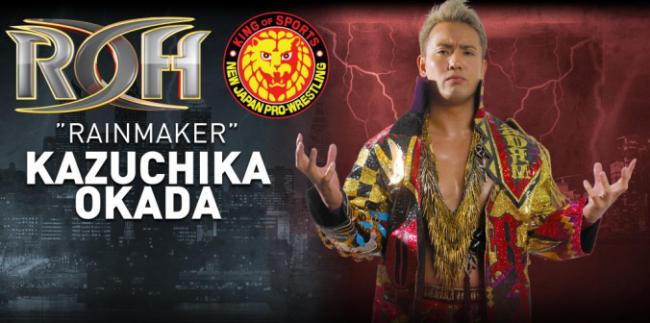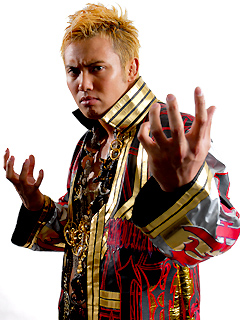I recently attended a TEDx Rotterdam talk in Rotterdam about technology of the future. Since then I’ve been inspired to share some of the wacky technologies that are addressing the current issues of technology waste and future sustainability. At the core of the technologies discussed during the TEDx talk was the idea of the blue economy. It’s pretty much green 2.0 or green but a bit better. I’ve quickly summarized the idea below but here’s a video if you want to see some quirky animations.
The basis of the blue economy is ‘one mans junk is another mans treasure.’ Basically that waste is not always just waste. The examples below show that industries can benefit the world from behaving in a more circular manner; they can feed off each other and behave in way which mirrors natural processes. Nature has been around for billions of years and in nature waste does not exist; everything is recycled. Technology is often easily separated from ideas of nature but many developers are now mining the vast network of natures brilliant ideas and cleverly mimicking the processes created from billions of years of wisdom.
1. RABBIT FUEL
Everyone knows a little about the activities of the common rabbit. They eat and they shit. They eat their shit and then they hump. Then they eat their shit again before another good humping. Dr. Sean Simpson looked past their debauchery and somehow found that a special microbe in their guts can be of use to make bio-ethanol from the waste of steel companies.
The kind of microbe he curiously found in a rabbits gut is part of the family of microbes called acetogens. These naturally occurring microbes are even older than algae and were one of the earliest life forms to live off gas guzzling activities. Acetogens thrive from the gas emissions released from factory vents, including the vents of industries involved in manufacturing steel, which happen to release many of the gases these microbes adore. Dr. Sean Simpson captured a promising variety of acetogen microbe in an unlucky rabbit from New Zealand and went on to found LanzaTech.
Just using the world’s steel mill waste gases, LanzaTech can produce 30 billion gallons of ethanol or 15 billion gallons of sustainable aviation fuel – about 19% of what is currently used. The technology has the ability to reduce or eliminate the release of waste gases like CO and CO2, offering a useful method to reduce air pollution. The worlds largest steel manufacturer ArcelorMittal’s steel mill in Belgium clearly understood the planet saving potential of the process and installed LanzaTech’s technology in their mill. They spent £87 million to use a microbe originally found in an unlucky New Zealand rabbit’s gut to turn a waste gas that contributes to global warming into bioethanol.
Original case study.
2. TREES IN THE DESERT
Many entrepreneurs have already successfully created a flourishing sustainable community in unimaginable areas. Las Gaviotas a small society in the barren Ilanos of eastern Columbia is one incredibly successful example. Sustainability pioneer Paulo Lugari over a few decades successfully transformed the barren and acidic Savannah soils into a 20,000 acres forest by applying particular fungus to tree roots.
An entrepreneur Pieter Hoff took the challenge a step further by spending 3 years in the Sahara desert developing a waterboxx. He took his inspiration from humble bird poo. Freshly dropped bird poo with a seed within works as a protective layer for the seed preventing water from evaporating and helping the seed store the moisture it needs to grow. The waterboxx is created in such a way that it prevents water from evaporating mimicking this bird poo protection process. Using this box based on the power of bird poo the average survival rate of plants in such arid areas rises from 10% up to 88%.
Original case study.
3. CLEAN SOAP
Soap has revolutionized hygiene standards across the globe but it is not all cleansing goodness; soap has a dirty streak, it wreaks a huge and destructive impact on the environment. Detergents do not degrade, especially in colder climates. Long after you have finished washing your undies, the fishes and frogs on the unfortunate end are subjected to an unwanted bubble bath of death. One of the solutions to this problem was the rise in use of palm oil, which is both renewable and biodegradable. Unfortunately instead of bubble bathing innocent frogs; millions of acres of land has been destroyed, endangered animals are at further risk and thousands of the majestic orangutan are being killed due to the destructive expansion of palm plantations.
According to the orangutan project almost 80% of the orangutan habitat has disappeared in the last 20 years and we are losing over 6,000 a year. To give an even more terrifying statistic (which I pray is exaggerated) in 2006, at least 1,500 orangutans were clubbed to death by palm workers. To outline the dirtiness of soap: it has moved from bubble bathing frogs, to destroying the environment, being part of the reason for many varieties of animals moving closer to extinction and orangutans being clubbed to death. Obviously, for these reasons there needs to be alternative methods for producing soap. Not just from renewable and biodegradable sources but from sources that do no involve wide-scale forest destruction and the numerous unneeded deaths of mighty orangutans.
One possible solution is to use waste, such as orange peel, for the manufacture of environmentally friendly soap. Instead of pummeling majestic orangutans; we can pummel the remnants of wasted orange peel to revolutionize our naughty soap industry. Professor James Clark, an avid orange pummeler, from The University of York in his study outlines that citrus peel is one of the most underutilized bio-waste residues on the planet. The left over peel accounts for 50 wt% of the fruit leading to 15.6 million tonnes of waste per year. His orange peel exploitation company explores the many possible orange related exploitation methods; including the extraction of limonene, a chemical which can be used to produce soap.
If you would like to exploit some orange peels at home there are various options: Wikihow offers an orange peel soap recipe (there are many other more fancy sites if you’re a soap connoisseur) and you can also make a spiffing combination of exploitation and getting pummeled with this recipe for orange peel liquor. To do a little for the mighty orangutans head on this website there are a few ways to help.
Original case study here.
4. MUSHROOMS FROM COFFEE WASTE
The world is crazy about coffee but involved in the production of coffee there is an equally crazy amount of waste. In 2009 the world consumed 126 million bags of coffee but most of this was lost as about 99.7 percent of the biomass of coffee is discarded during the harvesting, processing, roasting and brewing processes. The world is also crazy about shrooms, according to Professor Shuting Chang, a leading fungi scientist from Hong Kong, the value of the mushroom industry surpassed billions of $$$$ in 2008. Some clever peeps have worked out a beneficial and beautiful copulation of both of these crazes; growing mushies on left over brew.
There are several benefits to growing shrooms on the remnants of your brew. There is no need to sterilize the growing material as coffee has been exposed to high temperatures reducing the amount of bacteria. In the traditional method preparing substrates uses a lot of energy but through using coffee, which is already sterilized, the process is 80% more energy efficient. The process is also super speedy; when using coffee waste it only takes 3 months for mushrooms to fruit in comparison to the traditional hardwood oak substrate time of 9 months. The coffee beans that are left behind, after the mushroom growing process, are rich in amino acids and can therefore be can be reused as animal feed for cattle on the farm, roses in the garden or feed for your pet poodle at home. Or in Mr. Forty’s case, a renowned Cumbrian giant veg grower, you can use the coffee waste from Costa coffee grounds for the growth of your next award winning 12 stone marrow.
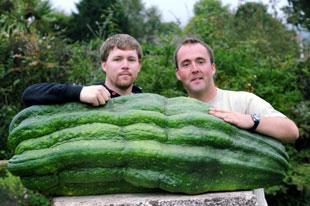
In a Daily Mail online post Mr. Fortey reveals his avid support for giant veg and for reusing wasted coffee grounds:
‘I think the public are fascinated by giant vegetable growing – it’s got the wow factor,’ he said.
‘I have been using Costa’s coffee grounds on my small holding for some months now and I’ve seen a huge improvement in the quality of my vegetables.’
A huge improvement states Mr. Fortey. He’s already grown a 12 stone marrow. If wasted coffee beans are helping him on his next quest to mutant vegetables, I’m sure they can be of use to your humble winter swedes. Many Costa and Starbucks chains offer bags of used coffee grounds for free. These grounds can be used in the garden but there are also 34 other unexpected ways to use this coffee waste such as making playdough dirt, making a roach trap or making your own fossils. If you would like to also learn about growing mushrooms on coffee waste or buy a starter kit, there are two main UK companies which specialize in coffee shroom growing methods: Grocycle in Exeter and The Expresso Mushroom Company in Brighton. Both offer tutorials, information and grow kits, which you can exploit in the hope of posing a future challenge to Mr.Forty’s fantastic 12 stone marrow.
Original case study.
5. WATER FROM AIR
The rainmaker uses wind energy from a wind turbine to power a heater exchanger, after the air travels through the heat exchanger it is then exposed to a cooler temperature causing condensation and making rain. The use of a wind turbine to power an air to water conversion makes this technology sustainable and usable in areas where there is a problem with water scarcity. From paying attention in highschool you can come up with an idea to produce a safe and sustainable water source.
According to the world health organization 663 million people rely on unimproved sources, at least 1.8 billion people use a drinking-water source that is contaminated with faecal matter and 842,000 people are estimated to die each year from diarrhoea as a result of unsafe drinking-water, sanitation and hand hygiene. It’s easy to forget when you’re in a place that rains all the f*!$^ng time that all over the world there are still millions who do not turn on the tap and get safe, drinkable water. With a technology like THE RAINMAKER it can rain allover the world, providing even people in the most water scarce areas safe water too.
Original case study.
If you would like to read more about wacky, planet saving technology here’s a link to all 100 case studies for you to peruse yourself. I hope you have fun growing your 20 stone winter swede, exploiting oranges at home and killing cockroaches with your planet saving coffee cockroach trap.
